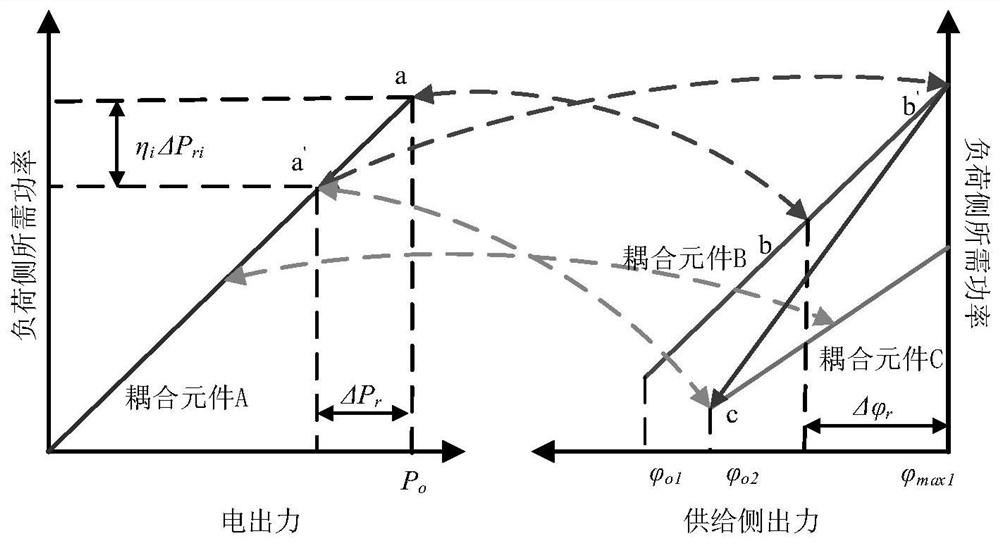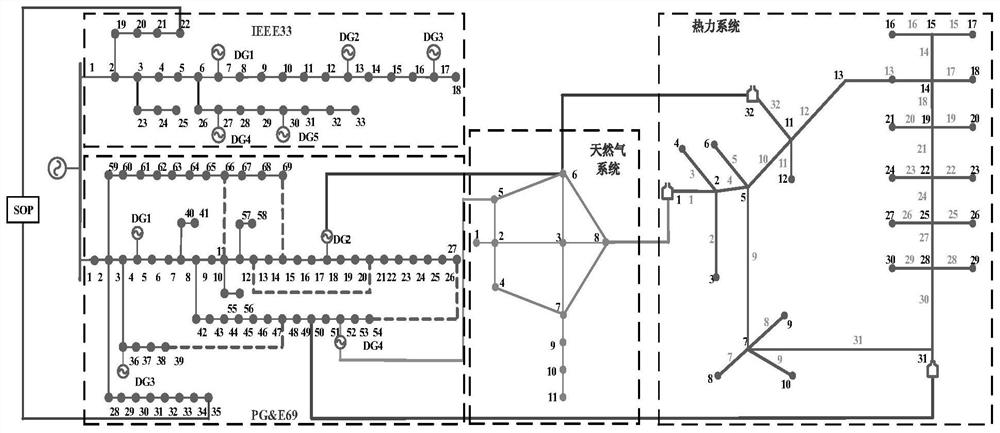Multi-energy cooperative active splitting control method for power distribution network
A control method and technology of distribution network, applied in the direction of power network operating system integration, photovoltaic power generation, electrical components, etc., can solve the problems of reducing distribution network load and rarely researched.
- Summary
- Abstract
- Description
- Claims
- Application Information
AI Technical Summary
Problems solved by technology
Method used
Image
Examples
Embodiment 1
[0043] A distribution network active splitting control method considering multi-energy coupling, see figure 1 , the method includes the following steps:
[0044] 101: Establish a multi-energy flow network model of the distribution network considering multi-energy coupling, and use the alternate iteration method to solve it to obtain the initial multi-energy flow of the system;
[0045]102: On the basis of the initial multi-energy flow of the system, according to the type of coupling elements in the system, propose an alternative control strategy and a coordinated control strategy, deeply explore the role of multi-energy synergy in the system, and actively decouple the power supply support for the distribution network to improve Distribution network power supply restoration, and on this basis, solve the multi-energy flow of the system, obtain the coupling components in the system, the output of each distributed power source, and the load distribution in the distribution network...
Embodiment 2
[0050] The scheme in embodiment 1 is further introduced below in conjunction with specific calculation formulas and examples, see the following description for details:
[0051] 201: Establish a distribution network multi-energy flow network model and solve it considering multi-energy coupling;
[0052] Wherein, the step 201 includes:
[0053] 1) Distribution network model
[0054] a) Distribution network topology model
[0055] Express the topological structure of distribution network in the form of node weighting tree, that is, T(V,E,W). Among them, V, E, and W respectively represent the collection of nodes, edges, and node weights. The weight W of a node can be expressed as:
[0056] W(v i ) = ω(S Gi -S Li ) (1)
[0057] In the formula: ω is the node v i the weight of S Gi , S Li Respectively represent the node v i The sum of the injected power of the connected power supply and the sum of the power of the connected load.
[0058] b) Distribution network power f...
Embodiment 3
[0171] The scheme in embodiment 1 and 2 is carried out feasibility verification below in conjunction with specific example, see the following description for details:
[0172] This method takes image 3 The PG&E69-node power distribution system, 32-node thermal system, and 11-node natural gas system composed of SOP and IEEE33-node distribution system are shown as an example to verify the proposed distribution network active decoupling strategy accuracy and effectiveness. image 3 The coupling elements in the system shown include gas turbines, CHP units, electric boilers and gas boilers, and their distribution is shown in Table 1 below; in the PG&E69 node power distribution system, nodes 5 and 36 are connected to photovoltaic power sources. The safety constraints in the system are: the voltage constraint of the power system is 0.95-1.05p.u.; the pressure constraint of the natural gas system is 20-75mBar, and the pipeline flow constraint is 1400m 3 / h; the mass flow rate const...
PUM
 Login to View More
Login to View More Abstract
Description
Claims
Application Information
 Login to View More
Login to View More - R&D
- Intellectual Property
- Life Sciences
- Materials
- Tech Scout
- Unparalleled Data Quality
- Higher Quality Content
- 60% Fewer Hallucinations
Browse by: Latest US Patents, China's latest patents, Technical Efficacy Thesaurus, Application Domain, Technology Topic, Popular Technical Reports.
© 2025 PatSnap. All rights reserved.Legal|Privacy policy|Modern Slavery Act Transparency Statement|Sitemap|About US| Contact US: help@patsnap.com



